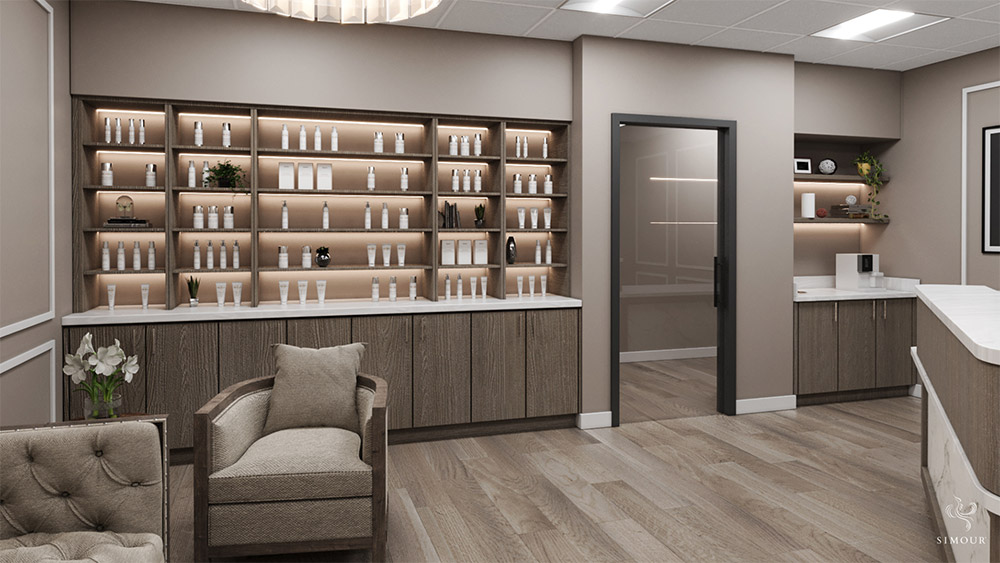“Empathy is the medicine the world needs.” – Judith Orloff
Empathetic interior design goes beyond aesthetics, becoming a silent partner in the healing journey, where every element contributes to a narrative of solace and serenity. Through a fusion of mindful details, from calming hues to inviting furnishings, these spaces invite patients and caregivers to experience a harmony that transcends the clinical, nurturing a profound impact on their emotional well-being within the walls of recovery. Let’s dive deeper below as we explore how empathetic interior design practices can positively impact your patients and reshape their healing experiences.
1. Color Palette and Lighting: Painting Emotions with Hues
The choice of colors within healthcare environments can significantly affect the emotional state of individuals. Soft, calming tones like blues and greens have been scientifically proven to reduce stress and anxiety. Conversely, harsh, bright colors may evoke tension and discomfort. Furthermore, natural light not only enhances the visual appeal of spaces but also influences circadian rhythms and sleep patterns, contributing to overall well-being.
2. Organizing Spaces: Crafting Inviting Environments
The layout and organization of healthcare spaces play a crucial role in nurturing a sense of community and support. Open, inviting spaces with comfortable seating arrangements promote social interaction and reduce feelings of isolation. Conversely, cramped and cluttered spaces can exacerbate feelings of anxiety and loneliness, underscoring the importance of thoughtful design considerations.
3. Furnishings and Decor: Creating a Homely Ambiance
Art, plants, and comfortable furniture add a personal touch to healthcare environments, making them feel more inviting and comforting. Art, in particular, has been recognized for its therapeutic potential in providing positive distractions and visual escapes for patients undergoing treatment.
4. Customization: Catering to Diverse Needs
Recognizing the diverse needs of patients, healthcare facilities often tailor their interior design approaches accordingly. Pediatric wards may incorporate playful designs to alleviate anxiety in young patients, while mental health facilities prioritize creating soothing and non-intrusive spaces to promote calmness. Customization processes must be systematic and meticulous to ensure that design elements effectively meet the specific needs of each demographic.
5. Impact on Healthcare Professionals: Nurturing Staff Well-being
The well-being of healthcare professionals is equally important in the design of healthcare environments. Comfortable break areas and ergonomic design considerations contribute to reducing stress and promoting staff morale. By prioritizing the needs of healthcare workers, interior design can create environments that foster productivity and job satisfaction.
Ultimately, empathetic interior design catalyzes healing, fostering a supportive atmosphere that enhances overall mental health outcomes for all who inhabit these spaces. By prioritizing aesthetics, comfort, and functionality, healthcare environments can become spaces that promote healing and well-being for all individuals involved. As the healthcare industry continues to evolve, the art and science of interior design will remain integral in shaping positive experiences and outcomes in healthcare settings.
SIMOUR Design’s focus on Medical Interior Design gives us tremendous insights into the nuances of making intentional and effective medical spaces. Our devotion to making truly healing spaces is the cornerstone of our practice. Book a discovery call today so we can start making a difference in your practice and your patient’s lives soon. Have a wonderful day ahead!




